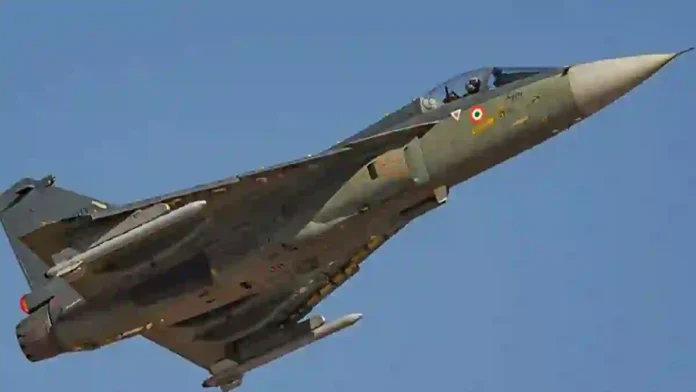The Ministry of Defence has signed a landmark contract worth ₹62,370 crore with Hindustan Aeronautics Limited (HAL) for the procurement of 97 Light Combat Aircraft (LCA) TEJAS MK-1A fighters for the Indian Air Force (IAF).
This order includes 68 single-seat fighters and 29 twin-seater trainer variants, marking one of the largest indigenous military aviation acquisitions in India’s history.
The deal has been placed under the ‘Buy (India–IDDM)’ category of Defence Acquisition Procedure 2020, underscoring the government’s strong emphasis on indigenous design, development, and manufacturing.
Deliveries of the TEJAS MK-1A fleet will commence from 2027-28 and will be carried out in phases over a period of six years. By the conclusion of this program, the IAF will have significantly bolstered its fleet strength with an advanced 4.5-generation multi-role fighter platform.
The aircraft are expected to play a critical role in both air defence and ground attack missions, giving the IAF additional flexibility in combat operations.
The TEJAS MK-1A variant comes with key enhancements over earlier models, integrating advanced systems such as the indigenously developed UTTAM Active Electronically Scanned Array (AESA) radar. Other upgrades include the Swayam Raksha Kavach electronic warfare suite, modern electronic control systems, mid-air refuelling capability, and advanced avionics packages.
These improvements are designed to enhance survivability, multi-role versatility, and offensive capability, placing the MK-1A as a highly potent platform within the 4.5-generation fighter segment.
Read- What Key Role Will Sukhoi Su-57 Stealth Fighter Play For The Indian Air Force?
Read- India’s Aircraft Carrier Plan Hit by US Tech Delays: US Betraying Indian Navy?
The aircraft will feature more than 64 percent indigenous content, reflecting India’s push towards defence self-reliance. Notably, 67 new indigenous items have been incorporated into this contract beyond what was included in the earlier MK-1A deal signed in 2021.
This deepening of local participation aligns with the broader Atmanirbharta (self-reliance) initiative in defence production, reducing future dependency on imports, and fostering critical capability development within India’s aerospace sector.
The project is being supported by a strong domestic industrial base, with over 105 Indian companies contributing to the production and supply of vital components and systems.
This extensive vendor ecosystem not only strengthens India’s aerospace manufacturing capabilities but also secures a long supply chain for supporting and sustaining the aircraft throughout its service life.
In terms of economic impact, the production is projected to generate approximately 11,750 direct and indirect jobs on an annual basis over the six-year delivery span.
This represents a significant boost to India’s domestic aerospace ecosystem, spurring technological growth, employment, and innovation across the defence industry. The program will also benefit small and medium enterprises (SMEs) that form part of the supply chain, ensuring broad-based industrial participation.
For the Indian Air Force, the addition of 97 TEJAS MK-1A aircraft, combined with the earlier order of 83 placed in 2021, will provide a strong backbone of indigenous light fighters.
Together, these acquisitions will result in the IAF fielding nearly 180 TEJAS MK-1A aircraft in the coming decade, making it the most produced fighter aircraft type in independent India’s history. This will also secure fleet standardisation benefits, streamlining operations, logistics, and pilot training.
Strategically, the TEJAS MK-1A order strengthens India’s air power at a time when fleet modernisation and combat capability expansion are critical due to regional security challenges. By inducting large numbers of indigenous fighters, the IAF is not only filling squadron gaps but also preparing for greater self-reliance in combat operations with reduced dependence on foreign fighter imports.
This program firmly establishes HAL as the lead integrator of advanced combat aircraft while showcasing India’s maturing capability to design, develop, and mass-produce modern frontline military platforms.
Agencies




